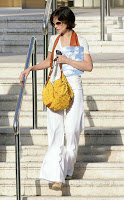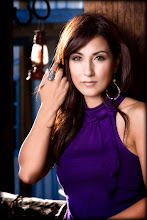 A strong form of non-verbal communication is Personal Appearance: the clothes choices and the way both men and women wear them forms an impression whether is good or bad on the people they meet . Having a well put together appearance will project confidence and show off the personal sense of style. The most important thing is selecting clothing and outfits according to the body type so the fit is ideal; it is also important to build a wardrobe according to individual lifestyle and needs. There are many factors in making an outfit work, but possibly one of the most important is to color coordinate. The choice of the colors in the outfit (and how well they coordinate), make a significant impression on the overall look projected. The word "coordinate" comes from its Latin roots co + ordin which means "to arrange in order", as well the word "Match" comes from its Old English roots gemaecca then shortened to macche, meaning "Mate or Companion". Dressing well then is mastering the art of color matching and coordinating, which is the same skills that artists and photographers have to learn. It's all about pleasing the eye and giving off a feeling of harmony. The extremes of it would be either a plain boring outfit or a chaotic messy outfit, so try to create a happy medium. Some people have a natural ability to do so, others have to learn, however it's not hard to master the concept as it works like a science. To help us study how to color coordinate, we need to use the Color wheel:
A strong form of non-verbal communication is Personal Appearance: the clothes choices and the way both men and women wear them forms an impression whether is good or bad on the people they meet . Having a well put together appearance will project confidence and show off the personal sense of style. The most important thing is selecting clothing and outfits according to the body type so the fit is ideal; it is also important to build a wardrobe according to individual lifestyle and needs. There are many factors in making an outfit work, but possibly one of the most important is to color coordinate. The choice of the colors in the outfit (and how well they coordinate), make a significant impression on the overall look projected. The word "coordinate" comes from its Latin roots co + ordin which means "to arrange in order", as well the word "Match" comes from its Old English roots gemaecca then shortened to macche, meaning "Mate or Companion". Dressing well then is mastering the art of color matching and coordinating, which is the same skills that artists and photographers have to learn. It's all about pleasing the eye and giving off a feeling of harmony. The extremes of it would be either a plain boring outfit or a chaotic messy outfit, so try to create a happy medium. Some people have a natural ability to do so, others have to learn, however it's not hard to master the concept as it works like a science. To help us study how to color coordinate, we need to use the Color wheel:

HUE -The pure color (for example RED)
TONE- Hue + small amount of gray or opposite color (will mute or tone down the color)
TINT- Hue + White (will lighten the color)
COMPLEMENT TINT- Tint + small amount of gray or opposite color (will mute or tone down the tint)
SHADE - Hue + Black (will darken the color)
Complementary colors -Are those directly opposite in the color wheel or spectrum. When placed next to each other, complementary colors intensify each other and make the colors seem brighter. For example: Green and red are opposites and that’s why hunter green pants look great with a burgundy shirt. Blue is opposite of orange so colors like gold, rust, and brown complement shades of blue very nicely.
Analogous colors - Are Colors, which sit next to each other on the color wheel (contiguous colors). They harmonize since they each contain a bit of the same color. Go well together, such as blue pants, a blue-green shirt and a forest green jacket.
Monochromatic colors - All the colors are from the same color family, but different shades, tones or tints. All blue attire could consist of a Navy suit, light blue shirt, dark blue tie, blue pocket square, etc. Add some contrast to this combination by using texture and pattern. Some of the clothing items should be smooth; others rough in texture. Some items could be patterned, others solid.
Neutral colors - Shades of white, black and brown (at times even green). All the derivatives of these colors like grey, tan, cream, (hunter green) are included in this family. It is not very dynamic to dress in neutral tones but it is sophisticated. All shades of neutral match each other and any color on the wheel.
Triad colors - The first or Primary triad colors in the color wheel (or spectrum) are red, blue and yellow. (Navy suit, pale yellow shirt, burgundy tie) These are called pure colors because mixing them with each other and/or with white or black will create all the other colors on the wheel.
Core Color is the dominant color in a scheme. It’s the color of the main item in the outfit like the suit or a sweater. Accent colors are the second and sometimes third colors used in the scheme. The accent colors may be complementary, triad, analogous or neutral. Color contrast: The "rule" is, in an outfit, one of the three elements should be light, the other two dark.
Remember: When picking color coordinated outfits to suit the body, dark and dull colors recede thus making the body look thinner, and smaller. 
Light and bright colors project, which tend to bulk up and make the figure look larger.
Want to emphasize the shoulders and de-emphasize the hips? Wear a lighter colored top with dark bottoms. Dark colors are more formal than light. Bright colors in large amounts become tiresome to the eye.
Layers are a great way to bring color coordination and fashion style to the wardrobe. By choosing clothes which coordinate well together will give you the appearance of a put together fashion trendsetter. Color trends change each season, so make sure to find out what's the hot color of the season by watching fashion shows, celebrities fashion , fashion magazines and checking out other people's fashion choices, however how to color cordinate is a science which remains true throughout the years. The first step in finding a  personal fashion style is to choose colors that look great against the skin. Darker skins look better in warmer colors, while lighter skin look best in cooler colors, however both skins can pull off neutrals and pastels. Buy a perfect fit or tailor the clothes : a shirt should fit well and not sag, droop, gap, or pop at the seams. Pick a shirt that has colors that look great on you and the rest of the wardrobe (making how to coordinate much easier). When picking a print (best if you have areas you like to camouflage) do it according to body size, small body-small print; and do not mix too many prints. You can layer a vest, a jacket, or a sweater over a shirt in a color that pops from the shirt to help create that coordinated/pulled together look you are searching for. If a printed shirt is not your style choose a brightly colored solid shirt. Try layering two fitted shirts together, one that is slightly longer then the other so that it peeks out at the bottom; or a button up shirt, under a short sweater, leaving a few unbuttoned pieces at the top and bottom. For the pants choose neutral colors to coordinate and balance out the top. Black, tan, khaki items, and even jeans in different shades are good fashion choices to have in the wardrobe. Pull the look together and color coordinate by adding accessories like belts, scarves, hats, and jewelry. Use fashionable scarves as belts to add a punch of color to a solid monochromatic outfit or costume jewelry to add extra color that picks up on
personal fashion style is to choose colors that look great against the skin. Darker skins look better in warmer colors, while lighter skin look best in cooler colors, however both skins can pull off neutrals and pastels. Buy a perfect fit or tailor the clothes : a shirt should fit well and not sag, droop, gap, or pop at the seams. Pick a shirt that has colors that look great on you and the rest of the wardrobe (making how to coordinate much easier). When picking a print (best if you have areas you like to camouflage) do it according to body size, small body-small print; and do not mix too many prints. You can layer a vest, a jacket, or a sweater over a shirt in a color that pops from the shirt to help create that coordinated/pulled together look you are searching for. If a printed shirt is not your style choose a brightly colored solid shirt. Try layering two fitted shirts together, one that is slightly longer then the other so that it peeks out at the bottom; or a button up shirt, under a short sweater, leaving a few unbuttoned pieces at the top and bottom. For the pants choose neutral colors to coordinate and balance out the top. Black, tan, khaki items, and even jeans in different shades are good fashion choices to have in the wardrobe. Pull the look together and color coordinate by adding accessories like belts, scarves, hats, and jewelry. Use fashionable scarves as belts to add a punch of color to a solid monochromatic outfit or costume jewelry to add extra color that picks up on  existing colors in the outfit. When using accent colors, do not over do it, a nice red handbag is a great addition to a neutral outfit, but the red headband, red necklace, red bracelet, red shoes and red lipstick is just too much color coordination; keep it to a maximum of 2 or 3 small accent colors. Shoes finish off the look, and can either pull it together or completely disrupt it. Using neutral shoes and match the style of the outfit will have a look that is stylish and complete. Or be daring and pick a shoe as an accent color, it's so fashion forward. Once you master how to color coordinate your fashion, have more fun picking out a style and clothes to make you the fashion trendsetter everyone will admire.
existing colors in the outfit. When using accent colors, do not over do it, a nice red handbag is a great addition to a neutral outfit, but the red headband, red necklace, red bracelet, red shoes and red lipstick is just too much color coordination; keep it to a maximum of 2 or 3 small accent colors. Shoes finish off the look, and can either pull it together or completely disrupt it. Using neutral shoes and match the style of the outfit will have a look that is stylish and complete. Or be daring and pick a shoe as an accent color, it's so fashion forward. Once you master how to color coordinate your fashion, have more fun picking out a style and clothes to make you the fashion trendsetter everyone will admire.
Be fabulous,
Ella
Personal beauty, fashion trends, style, glamour like celebrities
http://community.beautybyella.com/
fashion, color, colors, color wheel, style, celebrities, outfit, clothes, coordinate, glamour, trends, red, blue, white, dress, dress dress outfit , pants, shirt, shirt, vest, scarf, accessories, accessory coordinate coordinate coordinate outfit

No comments:
Post a Comment